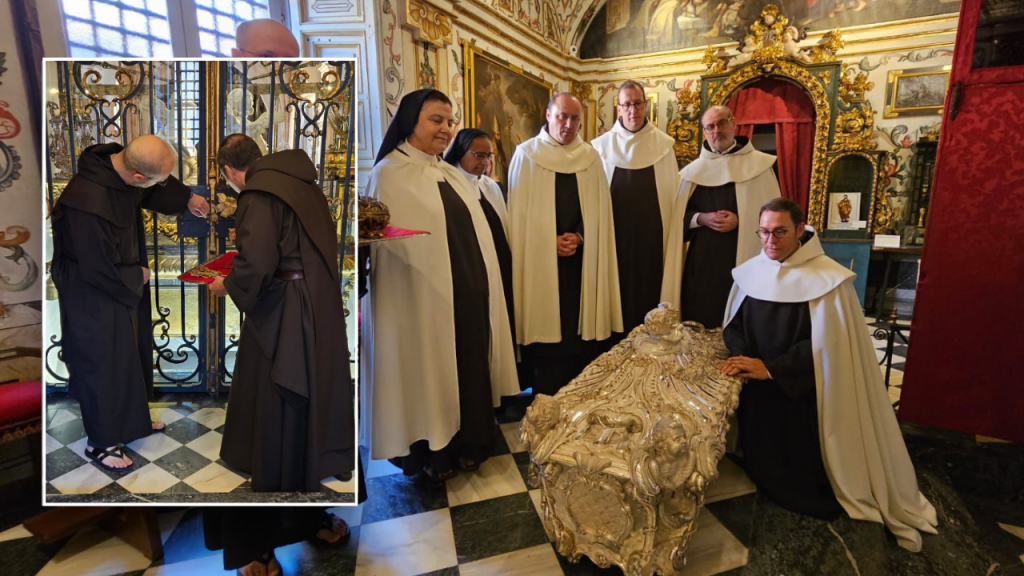The tomb of St. Teresa of Jesus, a medieval Catholic saint, was opened recently for research, and the condition of her body stunned those who found her. The tomb, located in the Diocese of Avila in Spain, was last opened in 1914. St. Teresa, also known as St. Teresa of Avila, was a Discalced Carmelite nun who died in 1582. Her corpse has reportedly remained incorrupt since her death. A group of Discalced Carmelite nuns, monks, and priests opened the tomb to study the relics of St. Teresa’s heart, hand, and arm with austerity and solemnity.
The process to reach the silver urn containing St. Teresa’s body was described as complex. The marble slab covering the tomb had to be removed, and the silver tomb was opened in the presence of a scientific medical team and members of the ecclesiastical court. Fr. Marco Chiesa noted that the remains of the saint have been remarkably well-preserved. Photographs from 1914 were consulted to compare the physical condition of Teresa’s body then and now. The uncovered parts – the face and foot – were found to be the same as they were in 1914, even though the skin appears mummified.
Studying the saint’s body has provided insight into the health conditions she suffered from before her death. Fr. Chiesa mentioned that the last few years of St. Teresa’s life were difficult for her to walk due to pains she experienced. Upon analyzing the foot relic, researchers discovered calcareous spines that made walking almost impossible for St. Teresa. Despite her physical defects, she continued to walk to Alba de Tormes, where she eventually passed away. Researchers hope that further analysis of Teresa’s corpse will provide valuable data and recommendations for the preservation of relics.
The overall analysis of St. Teresa’s body is still in its early stages, but researchers expect the project to yield important insights. Fr. Chiesa believes that the study will not only provide valuable information about St. Teresa herself but also offer recommendations for the preservation of similar relics in the future. The intricate process of opening the tomb and studying the saint’s remains is conducted with reverence and respect for the historical significance of St. Teresa of Avila. It is hoped that this research will contribute to a better understanding of the saint’s life and legacy, as well as enhance preservation techniques for relics.
The unveiling of St. Teresa of Jesus’ body has sparked interest and awe among researchers and the faithful. The remarkable preservation of her remains since 1582 has fascinated those involved in the study. By carefully examining the physical condition of the saint’s body, researchers hope to gain a deeper understanding of her health and life experiences. The analysis of St. Teresa’s corpse is viewed as an important step in preserving relics and enriching our knowledge of this revered figure in Catholic history. The project is still ongoing, and researchers anticipate that it will yield significant findings and recommendations for the conservation of relics in the future.


